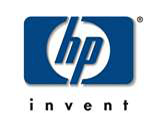Graphene May Give Processors A Boost
Researchers at MIT have figured out that graphene, sheets of atom-thick carbon, could be used to make chips a million times faster.
The researchers have worked out that slowing the speed of light to the extent that it moves slower than flowing electrons can create an “optical boom”, the optical equivalent of a sonic boom.
Slowing the speed of light is no mean feat, but the clever folks at MIT managed it by using the honeycomb shape of carbon to slow photons to slow photons to several hundredths of their normal speed in a free space, explained researcher Ido Kaminer.
Meanwhile, the characteristics of graphene speed up electrons to a million metres a second, or around 1/300 of the speed of light in a vacuum.
The optical boom is caused when the electrons passing though the graphene reach the speed of light, effectively breaking its barrier in the carbon honeycomb and causing a shockwave of light.
As electrons move faster than the trapped light, they bleed plasmons, a form of virtual particle that represents the oscillation of electrons on the graphene’s surface.
Effectively, it is the equivalent of turning electricity into light. This is nothing new – Thomas Edison did it a century ago with fluorescent tubes – but it can efficiently and controllably generate plasmons at a scale that works with microchip technology.
The discovery could allow chip components to be made from graphene to enable the creation of light-based circuits. These circuits could be the next step in the evolution of chip and computing technology, as the transfer of data through light is far faster than using electrons in today’s chips, even the fast pixel-pushing ones.
So much faster that it’s “six orders of magnitude higher than what is used in electronics”, according to Kaminer. That’s up to a million times faster in plain English.
“There’s a lot of excitement about graphene because it could be easily integrated with other electronics,” said physics professor Marin Soljačić, a researcher on the project, who is confident that MIT can turn this theoretical experiment into a working system. “I have confidence that it should be doable within one to two years.”
This is a pretty big concept and almost sci-fi stuff, but we’re always keen to see smaller and faster chips. It also shows that the future tech envisioned by the world of sci-fi may not be that far away.
Courtesy-TheInq
HP Looks Beyond Windows
 Hewlett-Packard has announced the availability of its latest Pavilion laptop with Google’s Chrome OS as the PC maker attempts to improve laptop sales by offering an alternative to the Windows OS.
Hewlett-Packard has announced the availability of its latest Pavilion laptop with Google’s Chrome OS as the PC maker attempts to improve laptop sales by offering an alternative to the Windows OS.
The Pavilion 14 Chromebook has a 14-inch screen and runs on a dual-core Intel processor. The laptop is roughly 21 millimeters thick, and weighs 1.8 kilograms. It offers just over four hours of battery life, said David Conrad, director for product management at HP’s consumer products group.
The laptop is expected to ship on Monday in the U.S. starting at $329.99. The company did not immediately provide worldwide availability information.
HP wanted to widen its product offerings and the new Chromebook is targeted at those who do most of their computing on the Web, Conrad said.
“It’s really about choice. We have a very wide offering,” Conrad said. “We think the time is right for an additional choice for people to have a gateway to their Google digital lifestyle.”
The laptop has only 16GB of solid-state drive storage, but will offer 100GB of free Google Drive storage for two years.
The Chromebook has the same design as HP’s other PC offerings, which mostly run on Windows and have standard-capacity hard drives. But, with a lot of data moving to the cloud, the Chromebook provides a different usage model.
“We see this as another device to be used around the house. It’s easily managed,” Conrad said.








 Sign up for our Technology Newsletter
Sign up for our Technology Newsletter